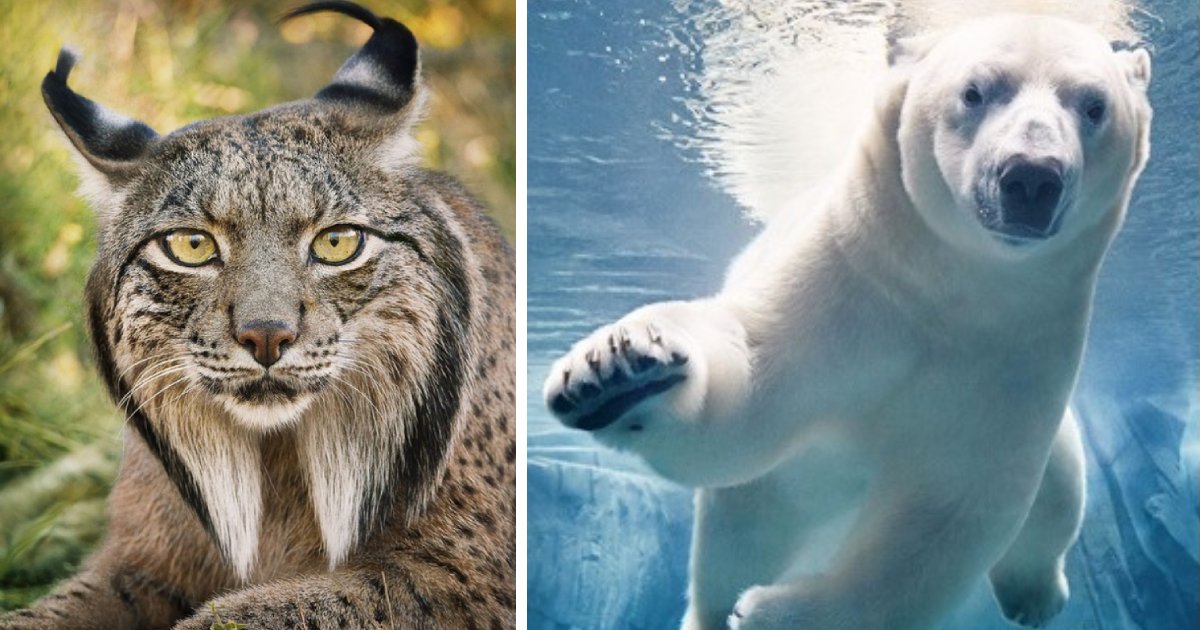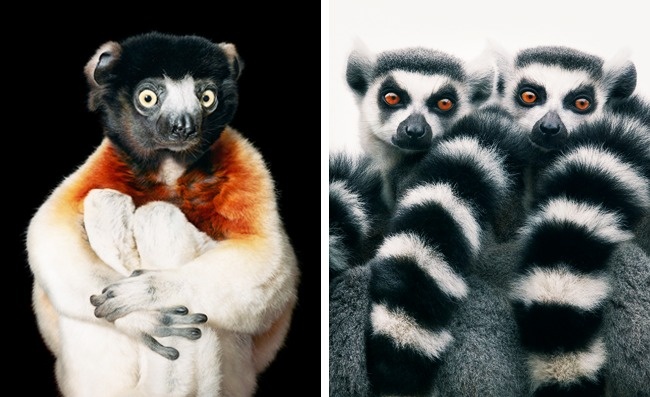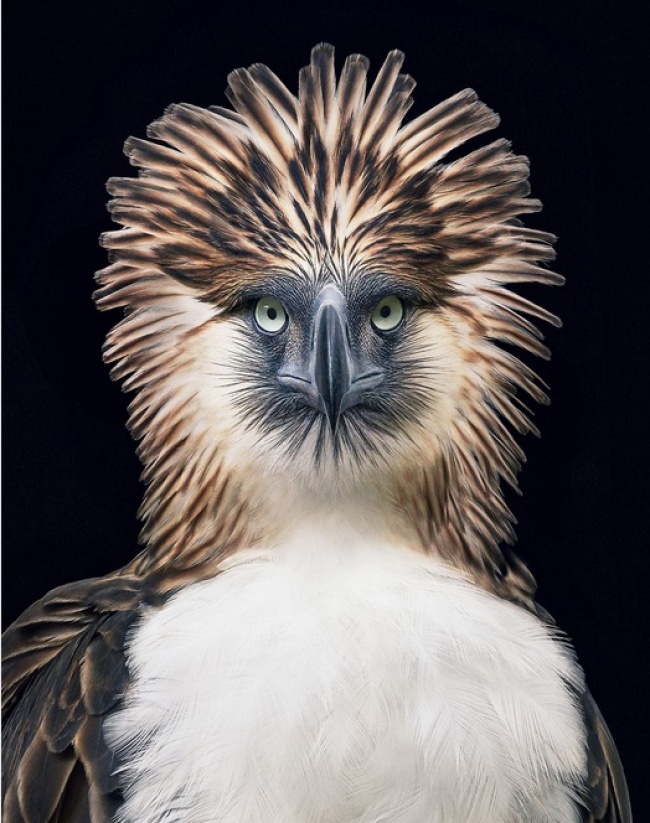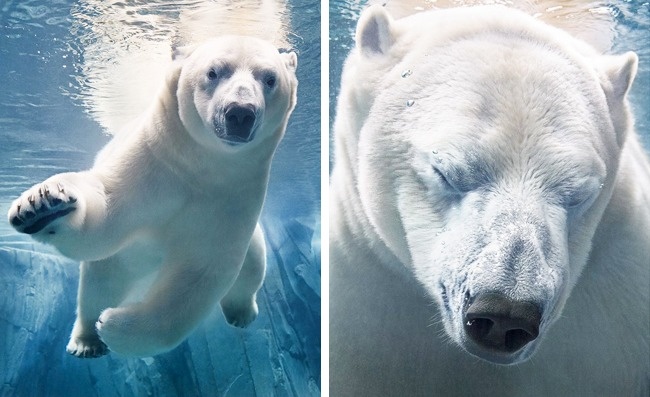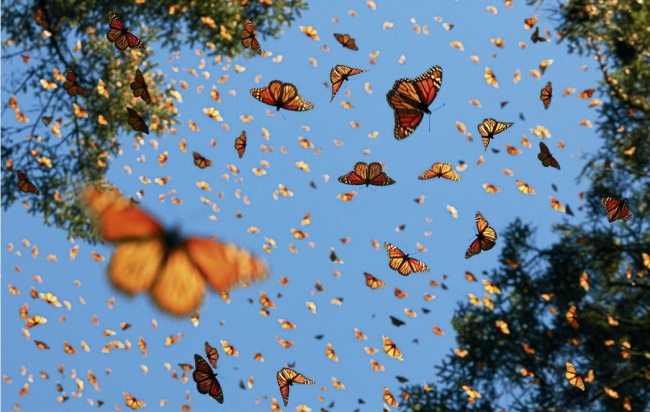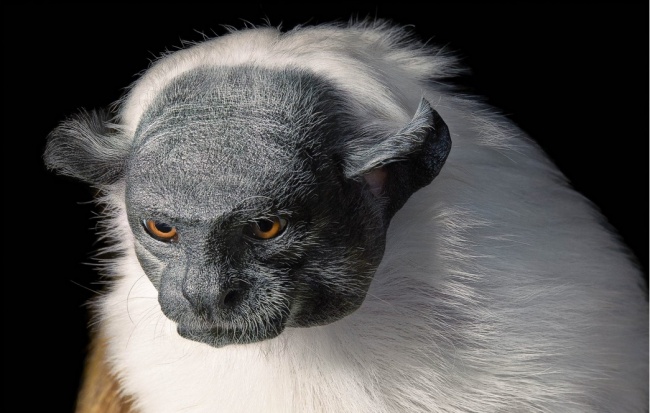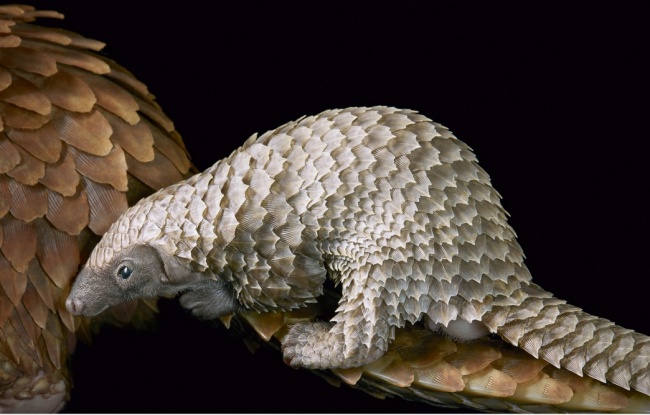Photographer Tim Flach shares the results of his extraordinary project to document the lives of threatened species.
In his Endangered book he shared many of the animals around the world that might soon be gone. Below are 13 of the animals that he shared!
#1. Ring-Tailed Lemurs
Ring-tailed lemurs can mainly be found on dry open lands and in forests on the south of Madagascar.
The International Union for Conservation of Nature (IUCN) defined this species as endangered because their population has fallen to between 2,000 and 2,400 animals — a shocking 95% decrease since the year 2000. Factors driving the decline include rapid habitat loss, hunting, and the illegal pet trade.
#2. Proboscis Monkey
This monkey is endemic to the island of Borneo in Southeast Asia, and it can be found in all 3 countries that share this island: Indonesia, Brunei, and Malaysia. It is most common around the island’s rivers, coastal areas, mangroves, and swamps.
This species is classified as threatened. Their number has decreased by 50% in the last 36-40 years. Habitat loss has been the primary cause of the dramatic decline of their population. The second reason is hunting because the meat of this monkey is used in Chinese medicine. At present, the proboscis monkey can be found only in protected areas and designated sanctuaries.
#3. Saiga
The present areas of the saiga’s habitat are Kazakhstan, Uzbekistan, Turkmenistan, Russia, and Mongolia. In 2002, IUCN added saigas to the list of species at risk.
The population decrease is caused mainly by poaching (because of their horns) and infectious diseases. The other reason is climatic variability. Harsh winters with strong winds or high snow coverage disable feeding on the grass under the thick snow.
#4. Phillippine Eagle
This bird can be found only in the forests of the Philippines. It’s the biggest eagle in the world by the length of its wings, and it is the national bird of the Philippines.
The Philippine eagle is classified as an endangered species, and the main reason for this is deforestation. The killing of this eagle is punished with 12 years in prison and huge fines.
#5. Beluga Sturgeon
They can be found in the Caspian, Azov, and the Black Sea basins, from where they migrate upstream in rivers to spawn.
Though being quite numerous in the past, the beluga sturgeon is now an endangered species, mostly due to fishing because of its caviar. Now the fish is under strong protection. The killing and trading of this fish are prohibited, and its caviar is banned.
#6. Polar Bear
The polar bear inhabits Arctic sea ice areas, and it is included in the IUCN Red List.
The number of individuals in 2015 was between 22,000-31,000. The significant decrease of the polar bear population is expected in the next 35 years. Climate change, pollution, oil and gas development, and slow breeding make the bears extremely vulnerable.
#7. Monarch Butterflies
This butterfly can be found in North America. Each year, it migrates from the northern and central states and southern Canada to Florida and Mexico. The butterflies usually spend winter there because the climate is less harsh, giving them more chances to survive.
The monarch butterfly is classified as an endangered species. The main reason for this is habitat loss due to herbicide use. However, the butterfly is under protection now, and there is a possibility that its population will be restored.
#8. Iberian Lynx
The lynx inhabits the southwest of Spain (the majority of the population can be found in Doñana National Park), and now its major area of habitat is the mountains.
The Iberian lynx is the world’s most endangered feline species. In 2002, there were only 100 individuals. Due to conservation efforts, there are 404 individuals now. However, at the beginning of the 20th century, there were around 100,000 Iberian lynxes.
By the 1960’s, there were only 3,000 left.
The lynx is listed as endangered on the IUCN Red List. The main reason for the reduced population was hunting, but the hunting has been prohibited since the 1970’s.
#9. Hooded Vulture
The area of their habitat is Central and South Africa. They live in savannas and forests, nesting on trees near human settlements. They feed mostly from the carcasses of dead animals and waste.
The number of these vultures has been reduced significantly, and now they have a status of critically endangered species. They are threatened due to various factors including poisoning, hunting, habitat loss, and degradation of habitat.
#10. Pied Tamarin
The pied tamarin can be found in a restricted area in the Brazilian Amazon Rainforest as well as within and just north of the city limits of Manaus, the capital of the Amazonas state of Brazil.
Because of the destruction of its natural habitat, the species is at risk. There also appears to be interspecific competition between the pied tamarin and the red-handed tamarin, with the latter gradually displacing the pied tamarin from areas of its historical distribution.
#11. Shoebill
The shoebill inhabits tropical swamps in Central and Eastern Africa where marbled lungfish can be found — their main diet. The bill in the shape of a shoe (hence the name) makes the bird a very skillful fisher. However, the bird is very sensitive to human presence and can easily leave its nest afterward.
These storks are extremely rare, and their number is limited to 5,000-8,000. This species is considered to be vulnerable with the main threats being habitat destruction, disturbance, and hunting.
#12. Red Panda
This species is included on the IUCN Red List and has an endangered status because there are less than 2,500 individuals left. For example, the population of red pandas in the Eastern Himalayas has been reduced by 40% during the last 50 years.
The red panda population density is very low, and their primary threats are direct harvest from the wild, competition with domestic livestock resulting in habitat degradation, and deforestation resulting in habitat loss. The other reason is that red pandas are still hunted and poached in Southeast China.
#13. White-Bellied Pangolin
This exotic animal inhabits the tropical rainforests of African savannas from Senegal to Kenya and to Zambia in the south.
The white-bellied pangolin has been vulnerable since 2008 and has been critically endangered since 2014. This means that if special protective measures are not applied, the number of this species can decrease by 30-50% in the next 10-20 years.
Recommended Video – “This Lion at a Philippine Zoo Is Blind Because of a Breeding Mistake’”


